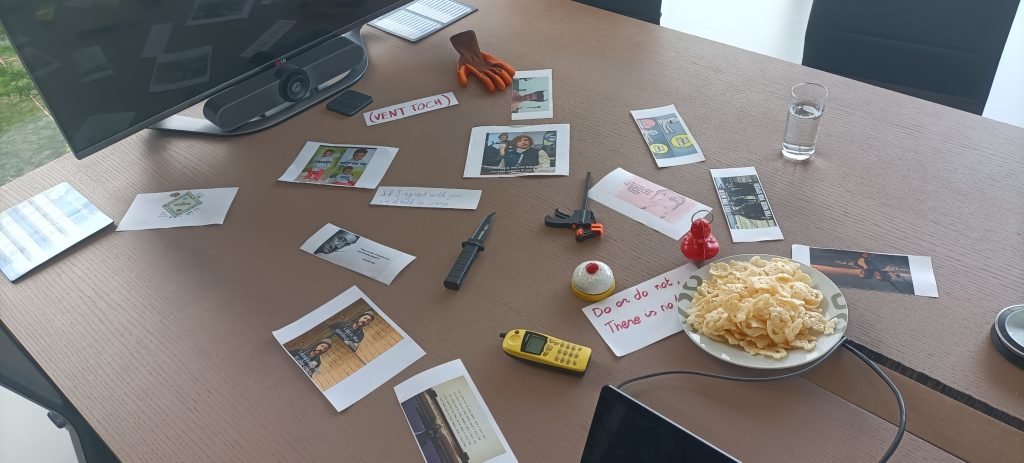Retro recipe
Good News / Bad News

Welcome, fellow explorers, to the Good News / Bad News retrospective! Picture a table scattered with quirky treasures: a glove, a hotel bell, a dog plushie, or even a favorite movie quote. Each of these random objects becomes a spark to connect the sprint to new perspectives.
The goal? To uncover insights hiding in the corners of your mind, to celebrate wins, and to call out challenges — all while having a bit of fun. With every object, we craft a story of “good news” or “bad news,” and together we turn those stories into concrete improvements.
Are you ready to play? Let’s dive in!
Ingredients & preparation
- Each participant brings two items (objects, quotes, pictures, etc.).
- The facilitator brings a few spare items for forgetful participants.
- To spice it up, the facilitator can set a theme, for example:
- “Bring an item that reminds you of your childhood.”
- “Print out your favorite TV or movie quote.”
Tip for the facilitator: Ask the participants to bring their items and quotes a couple days in advance, send a last reminder the day before the retro, and don't forget to bring some spare items and quotes.
Retrospective

Step 1: Welcome & setup
Everyone gets seated, the facilitator sets the scene and explains the format, and all items are collected into a pile in the middle of the table.
Step 2: First round of associations
- The facilitator hands a random object to participant A.
- Participant A must link the object to the sprint by starting with either:
- “The good news is ...”
- “The bad news is ...”
- Example: Blue drinking cup → “The good news is this: the cup is half full, and so was our team spirit. Even though we had lots of issues, we kept pushing forward.”
- A short team discussion can follow to unpack insights.
Step 3: Second association (opposite side)
- Participant A then picks a second object of their choice from the pile.
- This time, they must make an association in the opposite direction (if the first was good news, the second must be bad news, and vice versa).
- Example: Dog plushy → “The bad news is: I’m dog tired of waiting for code reviews all the time.”
- Each “bad news” triggers brainstorming for improvements. The facilitator notes down possible actions.
- Example outcome: Improve code review process by focusing on small, logical commits.
Step 4: Passing it on
- Participant A selects the next random object for participant B.
- Participant B repeats the same process (first one random, then one chosen, switching between good and bad news).
- The chain continues until everyone has participated.
Step 5: Is there an elephant in the room?
- Once the main round is complete, the facilitator asks:
- “Are there topics that still need to be raised?”
- “Are there aspects we touched on but didn’t fully explore?”
- This ensures that no important issues are left behind.
Step 6: Action points
- Concrete action items are written down and assigned.
- Timing is key: deep dives can be parked for later discussions if needed.
Follow-up
By the end of this retro, the team will have surfaced hidden insights, laughed over surprising connections, and walked away with clear, actionable improvements. Make sure revisit the action points in the next retrospective to check their status and discuss any further insights.